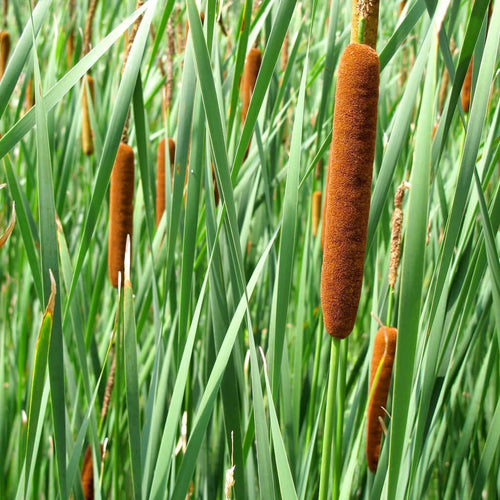Cattails
The lily pad or pond lily, an easily recognizable water plant is the cattail. Almost any kindergarten student can recognize the cattail. Any illustrated children’s book set by the water has pictures of Cattails Plants growing out of the lake, stream, or pond. The cattail is known for its single tall flowering stem, which is topped by a spike of male flowers; below this spike is an elongated, sausage-shaped cluster of densely packed female flowers. The wind easily pollinates the plant and the flowers from seeds that are wind-sown using a downy fluff.
Growing Cattails on your lawn
Besides being one of the most easily recognized water plants, the cattail is also one of the most useful, with archaeological evidence showing that the plant has been used by humanity for at least thirty thousand years. The stems and leaves of the plant are tough enough to be easily used for basket weaving and even improvised cordage. Cattail fluff was once, in some regions, still considered one of the best substances available as clothing insulation and pillow stuffing. The underground rhizomes are starchy and can be eaten raw or cooked like potatoes. Green female flower clusters can be boiled and eaten like corn-on-the-cob, new leaves are excellent greens, and even the pollen of the cattail can be used to thicken soups and stews or as a flour additive.
Besides the practical uses of the cattail, the plant is simple and uniquely beautiful. This fact is not lost on those who have wetland landscaping projects, and the cattail is often the plant of choice due to its fast growth rate and innate hardiness. The newest trend in landscaping and horticulture is to use as many native plants as possible and leave the landscaped area as natural as possible. That has led to the cattail becoming an extremely sought-after nursery plant.
Visit TN Nursery to purchase your cattails today
https://www.tnnursery.net



















































